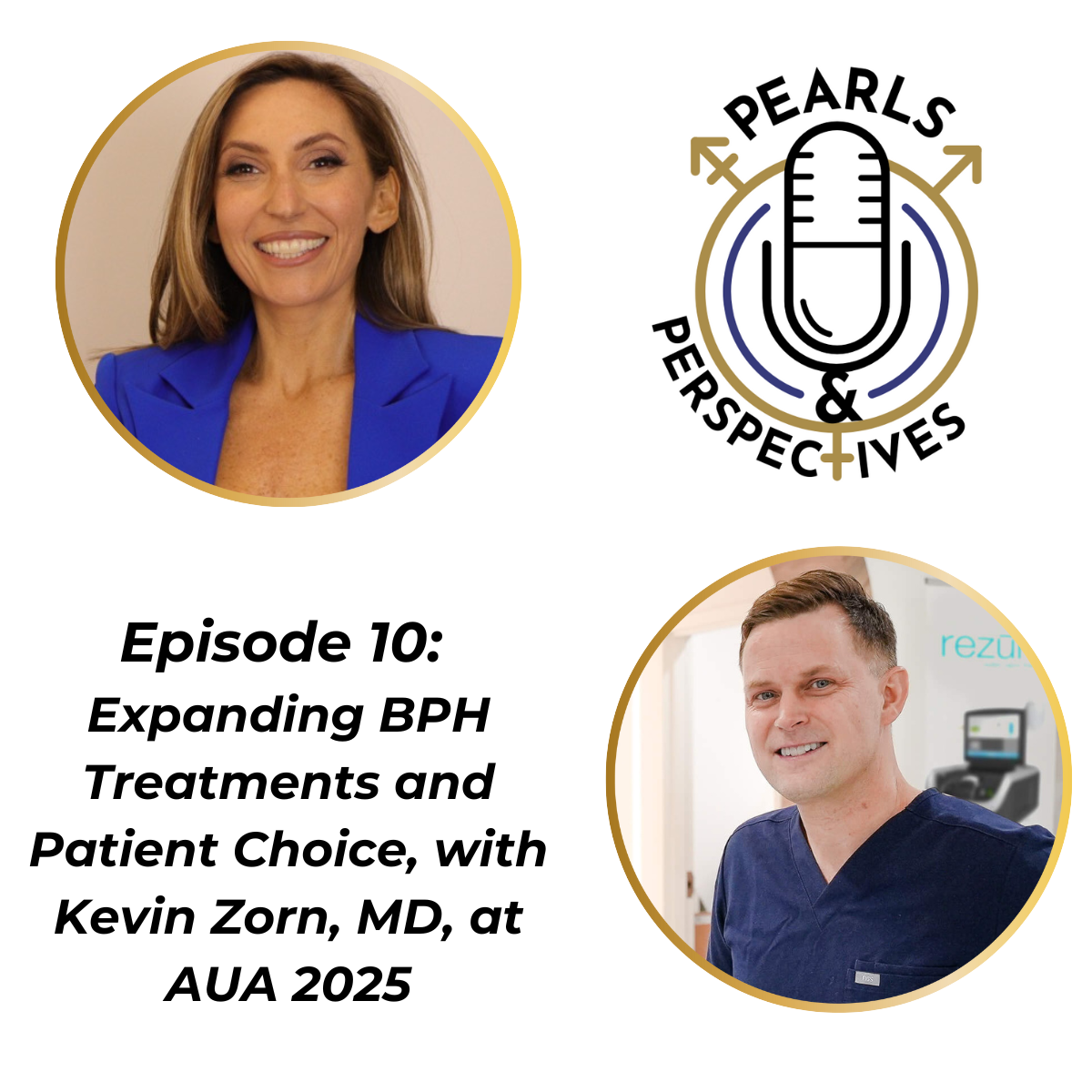News
Article
Nicolas Demogeot, MD: Impact of GETUG 14 on early-stage prostate cancer care
Author(s):
Demogeot discusses his team's GETUG 14 findings regarding early administration of ADT plus high-dose radiotherapy for intermediate to high risk prostate cancer.
Nicolas Demogeot, MD
Credit: LinkedIn

Findings presented at the American Society for Radiation Oncology (ASTRO) 2024 Annual Meeting in Washington, DC, this week showed a combination of short-term androgen deprivation therapy (ADT) plus high-dose radiation therapy is linked to an improved disease-free survival rate among patients with intermediate to high risk prostate cancer.1
The data from the phase 3 GETUG trial, presented by investigator Nicolas Demogeot, MD, of the Lorraine Cancer Institute in France, additionally showed a reassuring safety and toxicity profile with the combination therapy strategy for men with prostate cancer, and provided further evidence for the benefit-risk profile of the slowly adopted method of high cancer-risk treatment.
In an interview with Urology Times during ASTRO 2024, Demogeot discussed the GETUG 14 findings, and their impact on the field of prostate cancer radiation therapy.
Urology Times: What was the impetus of the GETUG 14 trial? What previous research informed your team’s objectives?
Demogeot: Previously, dose escalation studies with conformal 3D radiotherapy (RT) showed the feasibility to deliver 80 Gy to the prostate with better biochemical relapse-free survival in patients with intermediate and unfavorable prognosis.2,3
Later, randomized trials focusing on RT dose escalation confirmed better biochemical relapse-free survival, biochemical progression-free survival, or local failure, but no overall survival (OS) benefits with high radiation doses (74 - 80 Gy) compared with standard doses.4-8 So, high-dose RT (>76 Gy) could be considered as a standard dose in intermediate or high-risk patients. And so, we hypothesized that adding STADT to high-dose RT (80 Gy) in patients with localized prostate cancer increases oncological outcomes.
Urology Times: Beyond achieving the primary outcome, what were your biggest takeaways from the research?
Demogeot: High-dose radiotherapy does not replace ADT.
The result was observed in the intermediate-risk subgroup, the entire cohort, and the cohort excluding low-risk patients, but not in the high-risk subgroup. This confirms that our ADT regimen was not suitable for high-risk patients.
No improvement was seen in acute and late genitourinary (GU) and gastrointestinal (GI) toxicities. The observed differences in sexual toxicity were temporary due to the short duration of ADT and did not impact the quality of life.
Urology Times: Your team’s research alluded to a history of clinician concern over prescribing short-term ADT due to the risk of toxicity. What is your message to peers still unsure about the prescribing safety for patients with localized prostate cancer?
Demogeot: The results show no significant differences between the groups in terms of early GI and GU toxicities of grade ≥2. Grade ≥2 GI toxicity was identical in both arms (26%), and GU toxicity rates were also comparable (39% vs 42%). This confirms that short-term ADT is as safe as radiotherapy alone in terms of early side effects.
While grade 2-3 erectile dysfunction was more frequent in the short-term ADT and radiotherapy group (31% vs 6%, P <10⁻³), this difference is expected with the addition of ADT. However, it's important to highlight that other aspects of quality of life (QoL) were not significantly affected.
At 5 years, the cumulative probabilities of late toxicity were similar between the 2 groups, suggesting that short-term ADT does not increase the risk of long-term side effects.
Quality of life questionnaires showed a moderate decline in global health and functional status over time, with no significant differences between the two groups or between radiotherapy techniques. Urinary and prostate-specific symptoms (IPSS and QLQ-PR25) did not worsen during the study.
The study results demonstrate that short-term ADT combined with radiotherapy does not lead to significantly higher early or late toxicity compared to radiotherapy alone. While erectile function may be more affected in the acute phase, this is not durable and the overall safety profile and the minimal impact on quality of life support the use of short-term ADT in patients with localized prostate cancer. Clinicians can prescribe short-term ADT with confidence, knowing that its safety profile is acceptable.
Urology Times: What are your plans for follow-up or additional research?
Demogeot: We would like, on the one hand, to update the data from this study and—on the other hand—to participate in a meta-analysis with the aim of gaining more statistical power to further investigate the survival data.
References
- Kunzmann K. Short-term ADT plus radiotherapy improves disease-free survival in higher-risk prostate cancer. Urology Times. Published September 29, 2024. Accessed October 1, 2024. https://www.urologytimes.com/view/short-term-adt-plus-radiotherapy-improves-disease-free-survival-in-higher-risk-prostate-cancer
- Bey P, Carrie C, Beckendorf V, et al. Dose escalation with 3D-CRT in prostate cancer: French study of dose escalation with conformal 3D radiotherapy in prostate cancer-preliminary results. Int J Radiat Oncol Biol Phys. 2000;48(2):513-517. doi:10.1016/s0360-3016(00)00691-x
- Zelefsky MJ, Leibel SA, Gaudin PB, et al. Dose escalation with three-dimensional conformal radiation therapy affects the outcome in prostate cancer. Int J Radiat Oncol Biol Phys. 1998;41(3):491-500. doi:10.1016/s0360-3016(98)00091-1
- Dearnaley DP, Sydes MR, Graham JD, et al. Escalated-dose versus standard-dose conformal radiotherapy in prostate cancer: first results from the MRC RT01 randomised controlled trial. Lancet Oncol. 2007;8(6):475-487. doi:10.1016/S1470-2045(07)70143-2
- Michalski JM, Moughan J, Purdy J, et al. Effect of Standard vs Dose-Escalated Radiation Therapy for Patients With Intermediate-Risk Prostate Cancer: The NRG Oncology RTOG 0126 Randomized Clinical Trial. JAMA Oncol. 2018;4(6):e180039. doi:10.1001/jamaoncol.2018.0039
- Beckendorf V, Guerif S, Le Prisé E, et al. 70 Gy versus 80 Gy in localized prostate cancer: 5-year results of GETUG 06 randomized trial. Int J Radiat Oncol Biol Phys. 2011;80(4):1056-1063. doi:10.1016/j.ijrobp.2010.03.049
- Versteijne E, van Dam JL, Suker M, et al. Neoadjuvant Chemoradiotherapy Versus Upfront Surgery for Resectable and Borderline Resectable Pancreatic Cancer: Long-Term Results of the Dutch Randomized PREOPANC Trial. J Clin Oncol. 2022;40(11):1220-1230. doi:10.1200/JCO.21.02233
- Zietman AL, Bae K, Slater JD, et al. Randomized trial comparing conventional-dose with high-dose conformal radiation therapy in early-stage adenocarcinoma of the prostate: long-term results from proton radiation oncology group/american college of radiology 95-09. J Clin Oncol. 2010;28(7):1106-1111. doi:10.1200/JCO.2009.25.8475
















